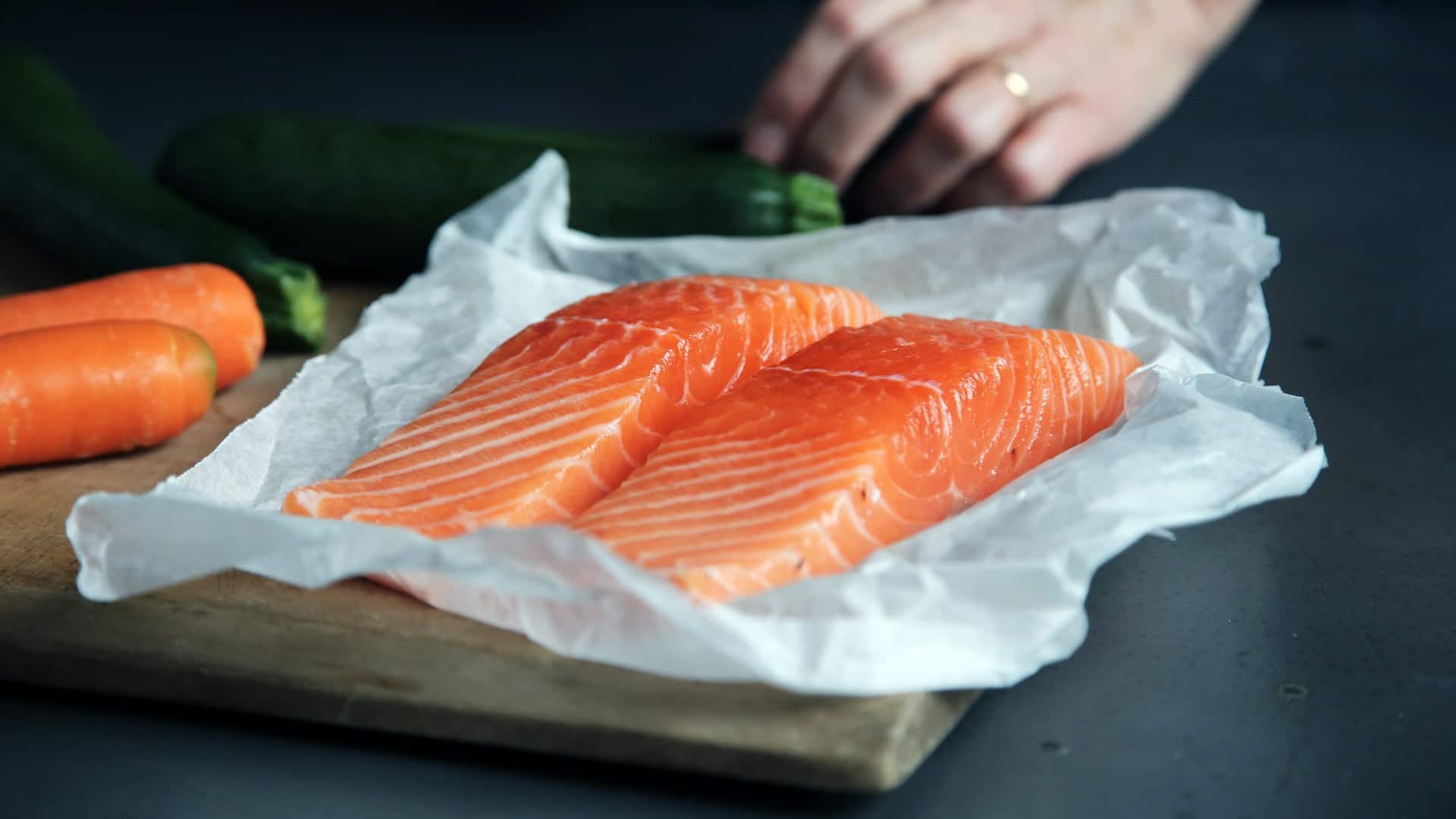How Long Can You Eat Raw Salmon?
If you purchased raw salmon and you intend to eat it raw, you can consume it within the same day if you have already opened the package. If the package remains unopened, you can deep-freeze the salmon and keep it unopened in your freezer for three months. If you catch salmon, you need to blast-freeze it for 24 hours before eating the flesh raw. Otherwise, cook the salmon because it is not going to be safe for raw consumption at all if you don’t cook it.
In general, Raw salmon is safe for consumption if the fish package indicates that it has been blast-frozen before packaging. Blast-freezing is a surefire way to destroy harmful pathogens like parasites. Salmon can harbor parasites like tapeworms and listeria, both of which can be very harmful to immunocompromised individuals such as infants, children, pregnant women, and the elderly, in general.
There is always this warning against eating raw or uncooked fish and meats when an immunocompromised person is involved because, in the majority of cases, a healthy person with a robust immune system won’t have trouble fighting off mild infections. In the case of an immunocompromised individual, however, it’s a different situation. A mild infection can quickly progress to a severe one, and the complications and health risks rise exponentially within a shorter amount of time.
Wild Salmon vs. Farmed Salmon
Are there significant differences between wild-caught salmon or farmed salmon?
There are certain advantages to both. In terms of food safety, farmed salmon tend to be safer because they are brought up in controlled environments, and they are fed regularly. What does feeding have to do with safety?
Well, fish that has been fed well every day will likely lose interest in eating wild prey. Wild prey has a tendency to harbor parasites, which can be passed on to the host, or the larger animal that has been grazing or eating.
Wild-caught salmon are hunters, and they will travel considerable distances to get food. Farmed salmon are primarily limited to a specific area, and humans distribute their food.
Be that as it may, scientists have seen some differences in wild-caught salmon and farmed salmon’s nutritional value. The wild-caught salmon tend to be more aged and, therefore, more nutritious than farmed salmon. The downside is wild salmon tends to be exposed to environmental pollutants more than their farmed counterparts.
Is It OK to Eat the Skin of Salmon?
Salmon skin is tasty and nutritious, and also, for the most part, safe for human consumption. So if you have heard things about salmon skin, they’re probably not true. However, there are some things that you need to know about this part of the salmon before you nosh down on it.
First of all, salmon skin is naturally nutritious. It has protein, fats, vitamin D, the B-vitamin family, and yes, essential omega-3 fatty acids. There is also phosphorous, which is extremely important for a lot of normal body functions. People who have to give up red meat for various health reasons often turn to fish like salmon for their protein needs. You can get plenty of fat and protein from salmon without worrying about the accompanying cholesterol. Salmon does not contain any dietary cholesterol, and thus, it is very healthy for the heart.
But what about the skin of the salmon?
The skin of fish is known for absorbing some quantity of heavy metals and other pollutants. The Atlantic Sea is notorious for having higher levels of mercury in the water. With this in mind, you can technically eat fish skin/salmon skin, but you have to be careful about the quantity that you consume. Moderate your consumption so you don’t end up consuming too much of the pollutants that are now commonplace in our oceans.
If you want to eat more salmon skin, we recommend sourcing your salmon from brands that get their fish stock from the Pacific instead. The Pacific is less contaminated, and therefore, the fish are safer to eat from the flesh to the skin. This may sound just a bit leery because of how specific the recommendation is. Still, we need to consider fish’s physiology and how they spend their entire lives in the water.
Is Sockeye Salmon Good for You?
Like other kinds of salmon, the Sockeye Salmon has the same benefits as other species of salmon. The Sockeye Salmon is native to Alaska. Fish, in general, provide numerous benefits to the body. Fish is high in protein and low in fat, and the kind of fat that fish supply is good for the heart and the body in general. The only thing that you should mind are parasites from the wild-caught ones, so it is best to cook your fish thoroughly each time.
Sockeye Salmon Nutrition
One ounce of this fish or about 28 grams supplies 42.8 calories, 18.3 grams of fat, and 24.5 grams of protein. You will also get 316 mg of omega-3 fatty acids and 22.4 mg of omega-6 fatty acids. These two are essential to the heart’s normal functioning and the health of the blood vessels. Sockeye salmon is also naturally rich in selenium, potassium, phosphorous, magnesium, iron, and calcium.
Is Salmon Skin High in Fat?
Commercially fried skin products can contain around 10 grams of fat per 100-gram serving. Much of the fat comes from the oil that is used for frying salmon skin. If you want to bake salmon skin or use a healthier form of cooking oil, it’s best to prepare the salmon skin at home. Salmon skin can be prepared and cooked like fried chicken, so it’s straightforward and fun to prepare. You need to know how to separate the skin from the salmon’s meat, and you will have wide strips of salmon skin to prepare.

